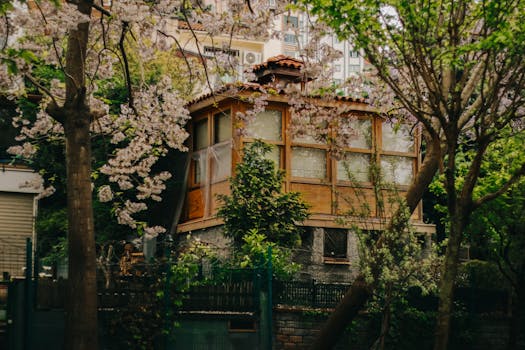
Urban Green Spaces: The Future of Outdoor Living in European Cities by 2025
Urban Green Spaces are becoming increasingly important in European cities, and for good reason. As the world becomes more urbanized, the need for green spaces has never been more pressing. Not only do they provide a tranquil escape from the hustle and bustle of city life, but they also play a crucial role in maintaining the physical and mental health of urban residents. In this article, we will explore the future of outdoor living in European cities and how urban green spaces are transforming the way we live, work, and play.
What are Urban Green Spaces?
Urban Green Spaces refer to any area of vegetation in an urban environment, including parks, gardens, green roofs, and even small pockets of greenery in between buildings. These spaces can be public or private and can range in size from a small courtyard to a large park. The key characteristic of urban green spaces is that they provide a natural oasis in the midst of a bustling city, offering a range of benefits for both the environment and human health.
The Benefits of Urban Green Spaces
The benefits of urban green spaces are numerous and well-documented. Some of the most significant advantages include:
- Improved Air Quality: Urban green spaces help to remove pollutants from the air, improving the overall air quality and making the city a healthier place to live.
- Reduced Noise Pollution: Green spaces can act as a buffer, reducing the noise levels in urban areas and creating a more peaceful environment.
- Increased Biodiversity: Urban green spaces provide a habitat for a wide range of plant and animal species, helping to maintain biodiversity in the city.
- Improved Mental Health: Spending time in nature has been shown to have a positive impact on mental health, reducing stress and anxiety and improving overall well-being.
- Increased Physical Activity: Urban green spaces provide opportunities for physical activity, such as walking, cycling, and sports, which can help to reduce the risk of chronic diseases.
The Future of Outdoor Living in European Cities
As we look to the future, it is clear that urban green spaces will play an increasingly important role in shaping the way we live, work, and play in European cities. By 2025, we can expect to see a significant increase in the number and quality of urban green spaces, with a focus on sustainability, eco-friendliness, and community engagement.
Some of the key trends that will shape the future of outdoor living in European cities include:
- Green Roofs and Walls: Green roofs and walls will become increasingly popular, providing additional green space and helping to reduce urban pollution.
- Community-Led Initiatives: Community-led initiatives will drive the development of urban green spaces, with local residents taking an active role in designing and maintaining these areas.
- Sustainable Design: Urban green spaces will be designed with sustainability in mind, incorporating features such as rainwater harvesting, grey water reuse, and energy-efficient lighting.
- Innovative Technologies: Innovative technologies, such as urban agriculture and vertical farming, will be integrated into urban green spaces, providing new opportunities for food production and community engagement.
Conclusion
In conclusion, urban green spaces are the future of outdoor living in European cities. By providing a natural oasis in the midst of a bustling city, these spaces offer a range of benefits for both the environment and human health. As we look to the future, it is clear that urban green spaces will play an increasingly important role in shaping the way we live, work, and play in European cities. With a focus on sustainability, eco-friendliness, and community engagement, the future of outdoor living in European cities has never looked brighter.





